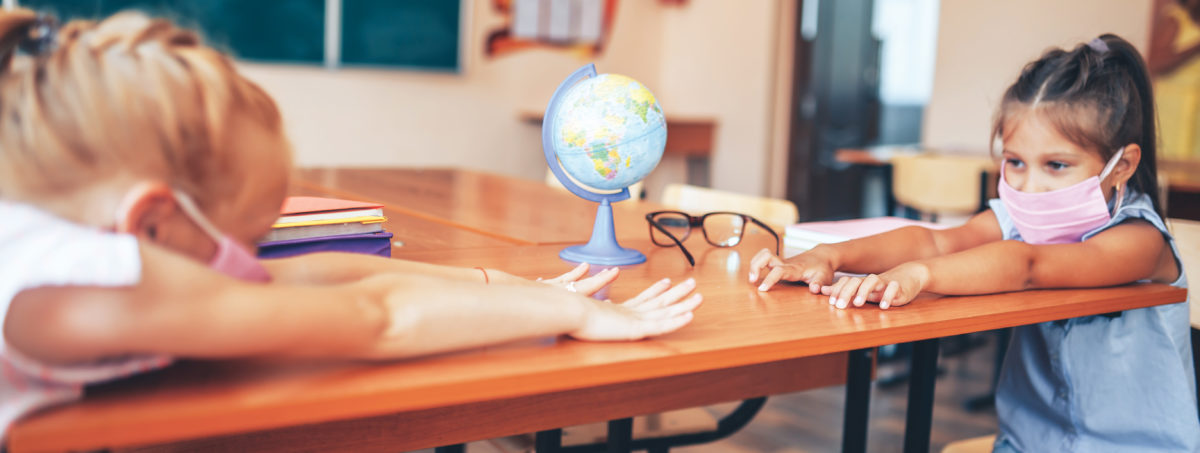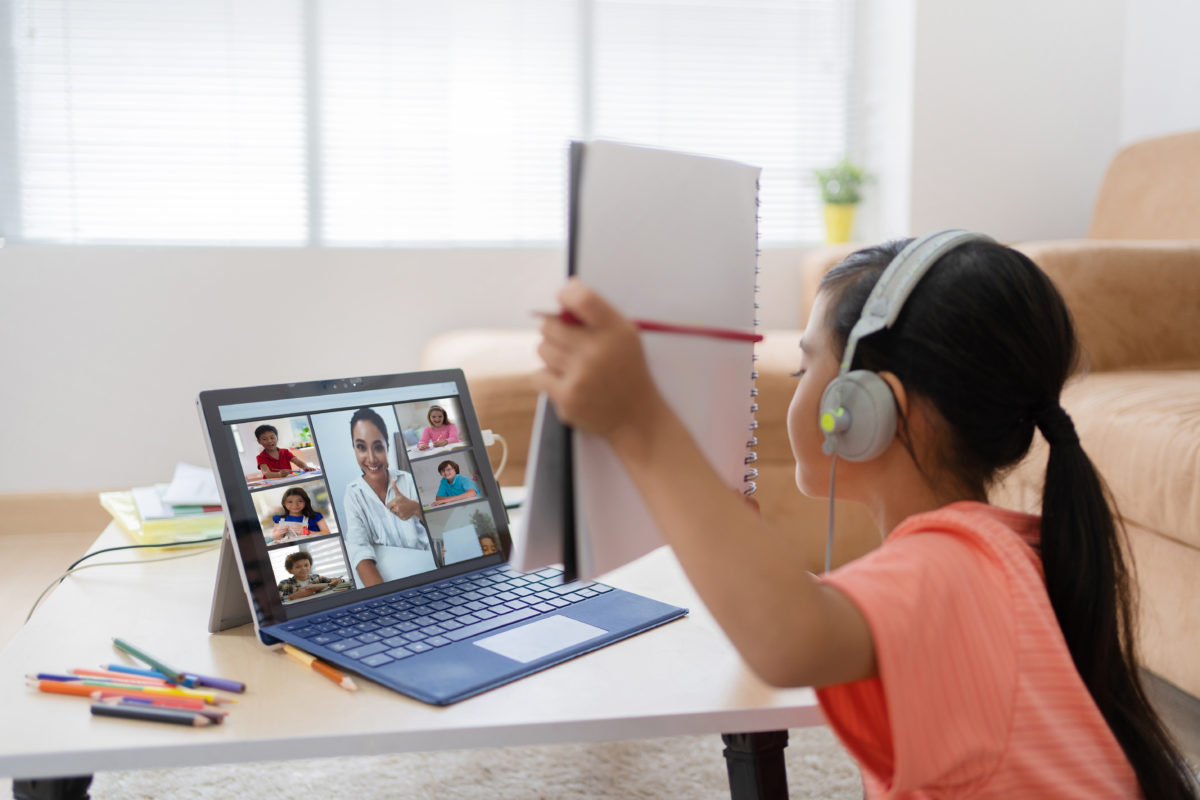As schools prepare to open for this upcoming school year in the face of challenges and unknowns, educators everywhere are finding themselves in uncharted territory. In situations like this, where we find ourselves with more questions than answers, it can be helpful to start with what we do know. What we know is the Responsive Classroom approach, which has guided educators for almost four decades, and, we firmly believe, can be the beacon that guides us as we chart a course for this unique school year.
Center for Responsive Schools recently had the opportunity to sit down with educators across the country to hear their answers to the most pressing questions teachers currently have about the beginning of this school year and the ways they plan on utilizing the Responsive Classroom approach to guide them, whether school begins in-person with social distancing requirements or virtually.
Those educators are:
Julia Monke – 1st grade
Suzanne Wright – 3rd grade
Amy Isenhart – 4th grade
Catie Meehan – 4th grade
Ina Pannell-Saint Surin – 5th grade special education
Roy Baker – 7th grade science
Bridgette Kelly – middle school
instructional coach
Sarah Jacoby – guidance counselor
In-person

What would you do to meet the social and emotional needs of students and build community on the first day of school?
Wright: Allow a safe space to honor whatever each student’s story is. Make time for each child to be able to share their stories. Ask them questions like, “What are some things you enjoyed while we were away?” “What did you miss about school?” “What are you excited about?”
Isenhart: Since they will be staying in one place for most of the day, provide students with ways to make their individual spaces more personalized, such as with pictures on their desks or stress-relieving squishy toys.
Meehan: Focus on creating shared experiences that encourage fun and make students feel like they belong, such as mask decorating parties! Remember also that adults aren’t going to have all the answers and hold discussions with students about what would be fun for them.
Pannell-Saint Surin: It is important to do a check-in with students on the first day of school and access any feelings and responses to the trauma that they all have been through (this includes, but is not limited to, the COVID-19 virus, social distancing, and systemic racism). This check-in can take many forms. For example, Morning Meeting sharing can offer children the choice of how they will express how they are feeling (in partnerships, small groups, whole group) and if they are okay (why or why not).
Later in the day, allow children to express their thoughts and feelings using the following strategies: opportunities for children to draw, journal, write poetry, paint, sculpt, choreograph, or create on computers; an activity such as A Warm Wind Blows, Coseeki, or Zoom that involves cooperation; or a writing prompt, such as “How does it feel to be returning to in-person school?”
Baker: The first task is to have an open discussion about the new settings. Allow students to ask questions and get honest and factual answers. Allow teachers to express their concerns as well. Create a pact as a class to adhere to the safest practices and go over and explain what each of those procedures and practices are while actively modeling them and allowing students to practice their own modeling. The biggest challenges will be normalizing the environment, helping students learn how to operate in this new restricted setting, and figuring out how everyone can work together to do the best they can with the available opportunities.
Jacoby: Focus on relationships and make yourself visible as a counselor, such as by standing outside and greeting students when they arrive. Teach kids how to contact you virtually or in-person so they can get the help they need; I like to use a Google form. Help students who come to you to name their fear or worry and then teach them coping strategies.
What skills, routines, and procedures would you model within the first week with students?
Wright: I would model typical routines for students such as giving a hand signal when they hear the chime, washing their hands, asking for help while maintaining the appropriate distance, lining up six feet apart, switching classes, using plexiglass dividers to talk between desks, and wiping down community items.
Isenhart: Routines will have to be consistent regardless of if students are learning in person, remotely, or a hybrid of the two.
Pannell-Saint Surin: I would model lining up; washing and sanitizing hands; traveling through the school building; social distancing in the classroom, cafeteria, hallways, and bathrooms; using computers and laptops; storing equipment properly; and keeping a protective distance between ourselves and others.
Baker: In the first week I would normalize new routines and procedures such as hand washing, social distancing, movement around the classroom, “shared” materials, cleaning personal space, and using the bathroom.
Kelly: Model social and emotional skills associated with the rule of being safe. Connecting everything you model to that rule will help students know why they need to know and demonstrate these skills.
Jacoby: I would model hand washing, wearing a mask, and using phrases like “remember space” or “six feet, so sweet” so that students can remind each other about keeping their distance. I would also model coping strategies for wearing a mask because wearing a mask could create anxiety for students.
Virtual

What would you do to meet the social and emotional needs of students and build community?
Monke: I would hold a Morning Meeting every day for about 15 minutes, including a quick game that the students all like in order to build community. Because it is difficult to manage a big group online, I would also consider building community through cohorts. I would split the day into three 1-hour time slots and, in cohorts of five to eight students, do the work of the first six weeks of school: setting hopes and dreams, creating class rules together, and communicating expectations for academic work.
Isenhart: Look for ways to create virtual backgrounds or create a background with a piece of poster paper. Drop off trifold boards to students’ homes so that they can create a personalized workspace their classmates will be able to enjoy. Students will also be able to look around the virtual classroom and learn about one another from their backgrounds.
Meehan: Schedule 10 minutes of one-on-one time with each student to create a bond and learn about each of them before the year starts.
Pannell-Saint Surin: I would conduct a full virtual Morning Meeting with all four components, which could look something like this:
- I would do a group greeting such as a wave, salute, bow, thumbs-up, peace sign, namaste, or foreign language.
- For sharing, I would use breakout rooms to do small group sharing with a prompt such as “Share an activity that you enjoyed about the summer.”
- For the activity, I would do something light and fun, such as Alphabet Aerobics, House Hunt, Protractor, or The Fidget Family.
- I would post a morning message such as “How are you feeling about school?” on a slide and assure children that they will have a chance to express their thoughts.
Baker: I would focus on trying to foster students’ desire to be part of the class in the most present manner possible. The hope is that, as a class, we would build enough empathy to create a safe digital space where students feel comfortable being on video, gain confidence in using the mic to express their learning and needs, and develop confidence in the tools we are using.
Jacoby: Teach lessons virtually with my two grade levels. I would advocate for more time with my live lessons. I would also do more video chats in place of phone calls.
What skills, routines, and procedures would you model within the first week with students?
Isenhart: I would focus on creating consistency with routines because they need to be effective in all settings. Students need to feel ownership over their learning community, so building expectations for behavior should come from the students. Also, setting hopes and dreams should start in the first week.
Pannell-Saint Surin: I would model digital citizenship such as logging on and off, keeping cameras on, raising hands, muting and unmuting, signaling turn-taking, making a nametag, and how to stay online for the duration of class.
Baker: First week would be about getting used to how to operate the Google Classroom and Google suite of apps and programs. Begin the first week helping students learn and get reacquaint-ed with the digital classroom. Everything should be participation-based and have low stakes.
Jacoby: Teach breathing and mindfulness strategies.
What are some new or unique challenges that might arise in schools, and what Responsive Classroom practices can be used proactively and reactively to address them?
Wright: Comforting an upset child while maintaining social distance or over the computer will be difficult. What to do when a child won’t wear a mask appropriately will also be a new challenge. I would recommend using Interactive Modeling, role-play, and lots of reinforcing language.
Pannell-Saint Surin: Some new challenges this year will be how to maintain distance in the classroom, making sure to consistently sanitize surfaces and wash hands, staying engaged in person and online, and building community online when we do not know the children. Hopes and dreams, the rule creation process, Interactive Modeling, Guided Discovery, teacher language, role-play, and problem-solving conferences will all be important Responsive Classroom practices for addressing these unique challenges.
Baker: We will need to meet students where they are. We need to be empathetic to both their adolescent developmental needs and the stress they are most likely feeling. We also can’t assume students already know what is safe, so we must explicitly teach everything, even the expectations. It’s important to show that you value a discussion of differing viewpoints, but also that there is a set of standard operations that need to be followed to honor the whole school community.
Jacoby: As a community, we will all need to learn how to ask for help and how to comfort one another. Role-play can be an effective Responsive Classroom practice for addressing these challenges, especially when students aren’t able to verbalize how they are feeling, and the sharing component of Morning Meeting can be a good time to provide space for a check-in each day.
